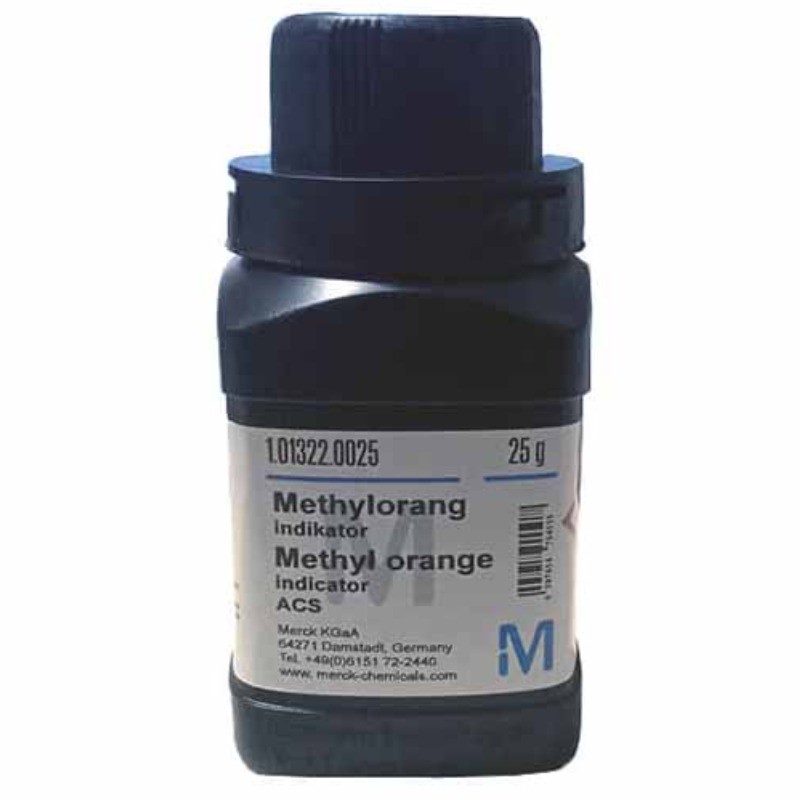
Price :
৳750
Estimated Shipping Time: Deliveries take up to 4-5 days after you place your order
Uses: Laboratory and scientific purposes
Product SKU: hYD92686xS
Methyl orange (C.I. 13025) indicator ACS, Reag. Ph Eur
Structure Formula:
Application :
- Acid-Base Titrations: Methyl orange is widely employed in acid-base titrations to determine the endpoint of the titration. The color change of the indicator provides a visual signal indicating when the solution has shifted from acidic to neutral or alkaline conditions.
- pH Monitoring: Methyl orange can be used for qualitative pH monitoring of solutions in the laboratory. By observing the color change, researchers can estimate the pH of a solution within the suitable pH range of the indicator.
- Quality Control: In certain industries and laboratories, Methyl Orange Indicator may be used for quality control purposes where monitoring and controlling the acidity or alkalinity of solutions is critical.
- Research Applications: Researchers may use methyl orange in various experiments and research projects where pH changes need to be detected or controlled within the indicator's effective pH range.
If you'd like to know more about this chemical or need any analysis report regarding this chemical then contact us support@echem.com.bd.
Chemical Structure: Methyl Orange is a pH indicator with the chemical formula C14H14N3NaO3S.
Color Change: It undergoes a distinct color change in response to changes in pH. In acidic solutions, it appears red, while in alkaline solutions, it turns yellow.
pH Range: Methyl Orange is particularly useful in the pH range of approximately 3.1 to 4.4. It is commonly employed in titrations involving strong acids and weak bases.
Transition Range: The range over which the color change occurs is known as the transition range. For Methyl Orange, this transition occurs in the acidic range.
Usage in Titration: Methyl Orange is often used in acid-base titrations due to its sharp color change at the equivalence point, making it easier for the observer to detect the endpoint of the titration.
Water Solubility: Methyl Orange is soluble in water, facilitating its use in aqueous solutions.
Sensitivity to Carbon Dioxide: It is sensitive to the presence of carbon dioxide (CO2), and in the presence of carbon dioxide, it may give a red color, complicating its use in certain situations.
Photodegradation: Methyl Orange can be susceptible to photodegradation when exposed to light for extended periods, which can affect its accuracy and reliability.
Laboratory Safety: While Methyl Orange itself is not highly toxic, standard laboratory safety practices should be followed, and contact with skin or eyes should be avoided.
Alternative Indicators: Depending on the specific requirements of an experiment, scientists may choose alternative indicators, such as phenolphthalein or bromothymol blue, which have different pH ranges and transition points.
No Review Found.
Login To Comment